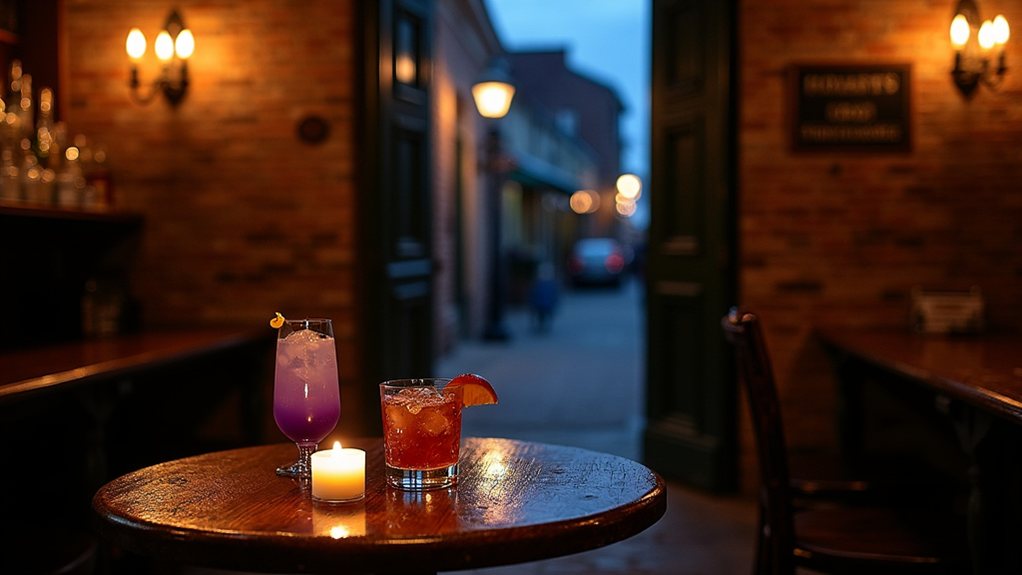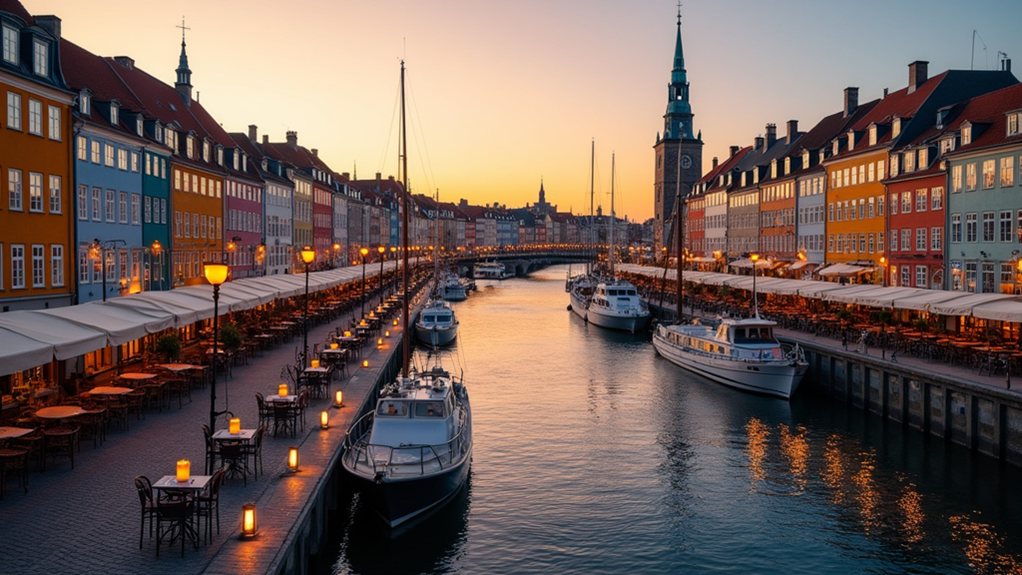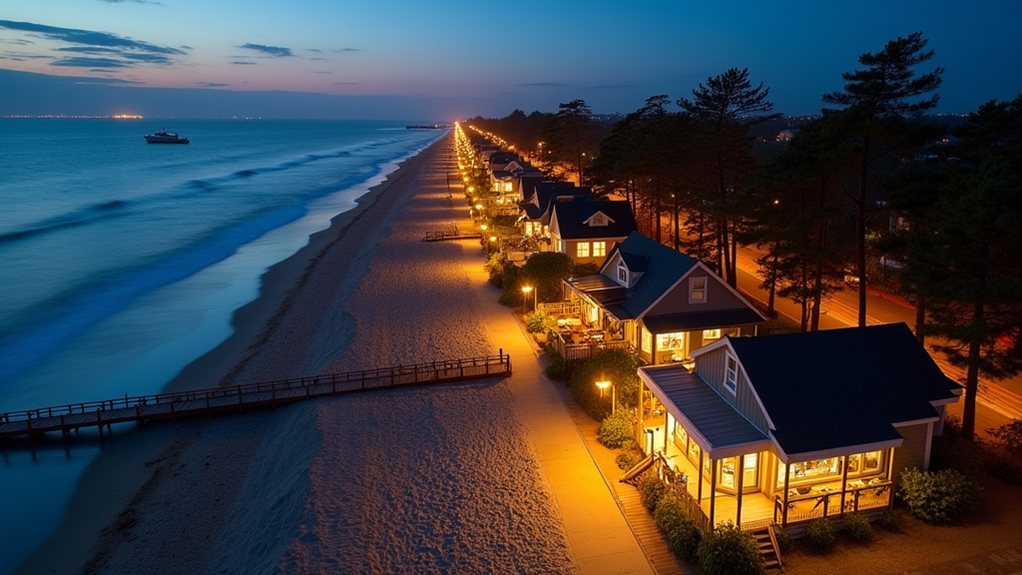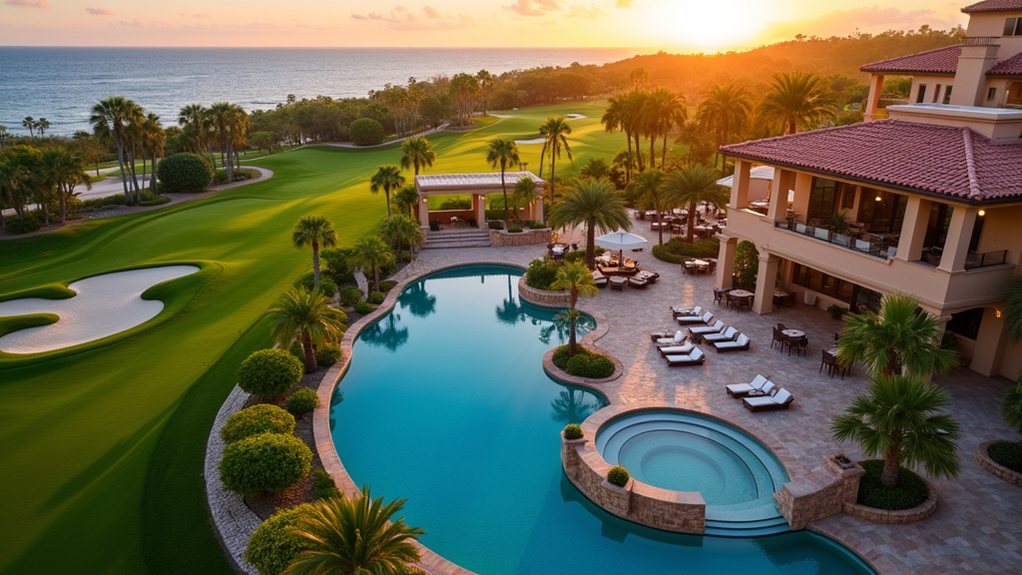Amber light filters through centuries-old windows at Lafitte’s Blacksmith Shop, casting ghostly shadows across weathered brick walls that have witnessed countless Bourbon Street revelries since 1722. This beloved watering hole, tucked away in the French Quarter’s vibrant heart, continues to draw both curious tourists and discerning locals with its signature Purple Drank and authentic pirate-era ambiance. While guidebooks might lead you to its doorstep, it’s the whispered stories from New Orleans natives that reveal why Lafitte’s remains the city’s most treasured cocktail sanctuary.
The Historic Spirit of New Orleans’ Cocktail Scene

While the vibrant heartbeat of New Orleans’ nightlife pulses strongest along Bourbon Street today, the city’s oldest cocktail bar, Lafitte’s Blacksmith Shop, stands as a symbol to nearly three centuries of spirited history. Built between 1722 and 1732, this iconic establishment predates the city itself and originally served as a base for the notorious pirate Jean Lafitte‘s clandestine negotiations.
The dimly lit tavern, constructed of weathered brick and ancient timbers, continues to attract both curious tourists and dedicated locals who appreciate its authentic ambiance, free from the neon glow that dominates much of the French Quarter. Here, patrons can sip traditional concoctions while imagining the whispered conversations of smugglers and insurgents that once filled the room.
While Lafitte’s claims the title of oldest bar, New Orleans boasts numerous historic watering holes that have shaped American cocktail culture. Tujague’s, which began as Dutrey’s Coffee Exchange in 1867, became the birthplace of the minty Grasshopper cocktail, created by mixologist Philip Guichet. During a national cocktail competition in 1918, Guichet crafted the now-famous Grasshopper cocktail recipe that combines crème de menthe, crème de cacao, and cream.
Just blocks away, the Old Absinthe House introduced the invigorating Absinthe Frappé in 1874, a creation of bartender Cayetano Ferrer that combines the anise-flavored spirit with simple syrup and soda water.
During Prohibition, these establishments didn’t simply shutter their doors—they moved their operations underground, continuing to serve their loyal patrons in defiance of federal law. This rebellious spirit remains embedded in New Orleans’ drinking culture. Many visitors plan their trips to coincide with the city’s perfect weather seasons, typically found in spring and fall when temperatures hover around the ideal 70°F mark.
Today’s visitors can follow a historical cocktail trail through the French Quarter, from Lafitte’s candlelit tables to Pierre Maspero’s on the corner of St. Louis and Chartres Streets, sampling the city’s official cocktail, the Sazerac, made with Peychaud’s bitters and rye whiskey, or the fruity Hurricane perfected at Pat O’Brien’s. The legendary Sazerac Bar, birthplace of America’s first cocktail, continues to be a must-visit destination for enthusiasts of classic mixology.
The city’s oldest bars don’t just serve drinks—they preserve traditions, honor innovation, and continue to write new chapters in the spirited story of New Orleans, one cocktail at a time. Lafitte’s has become particularly famous for its signature Purple Drank, a frozen Voodoo Daiquiri that draws crowds even on quieter evenings.







